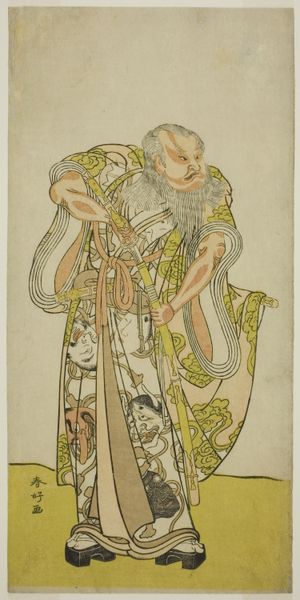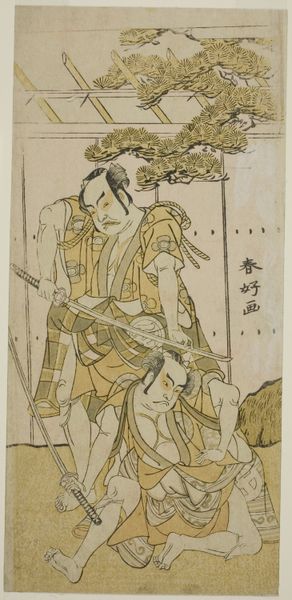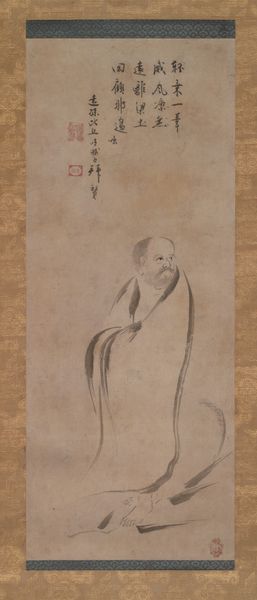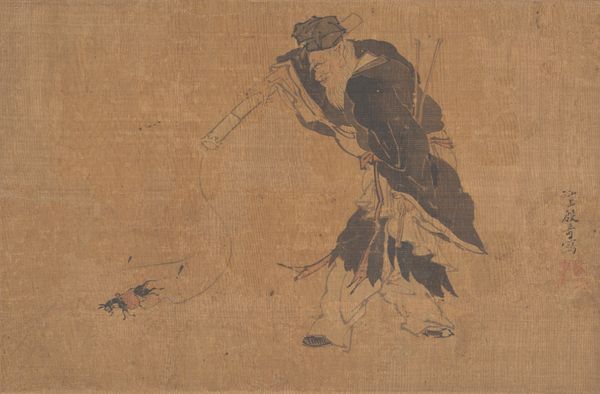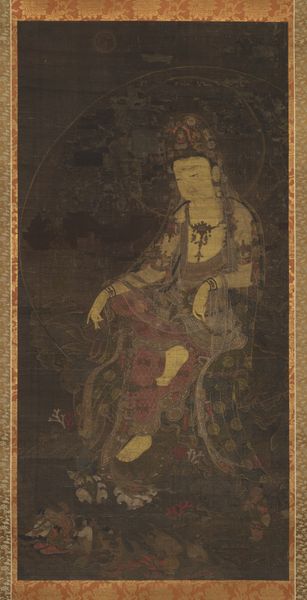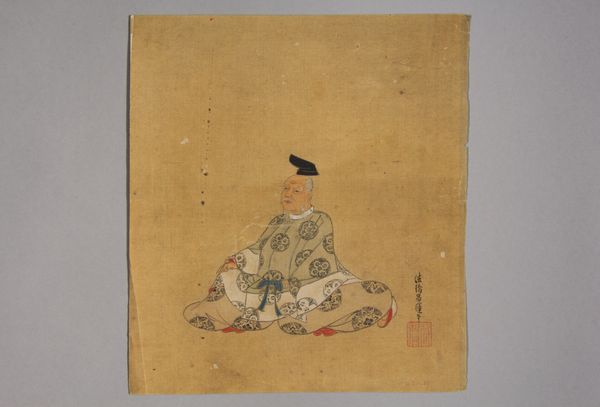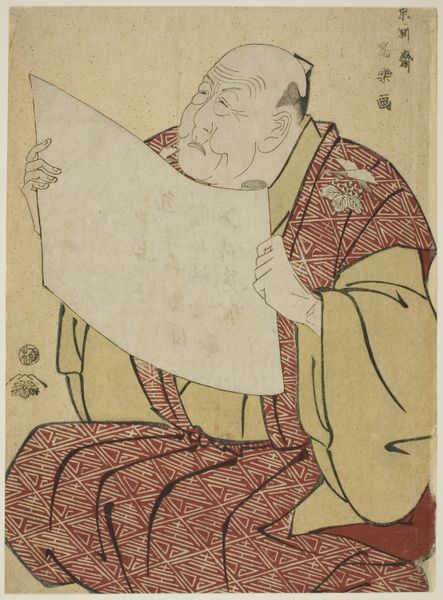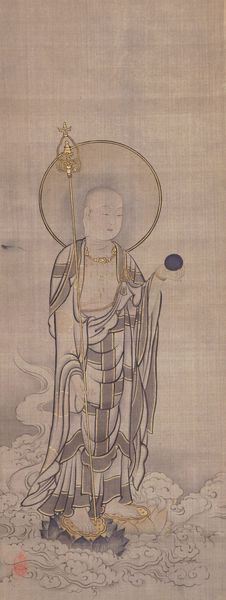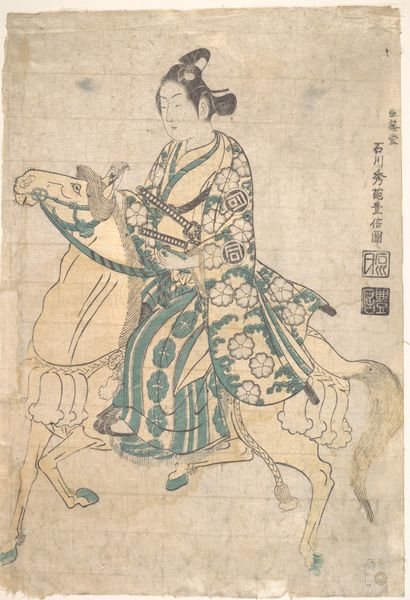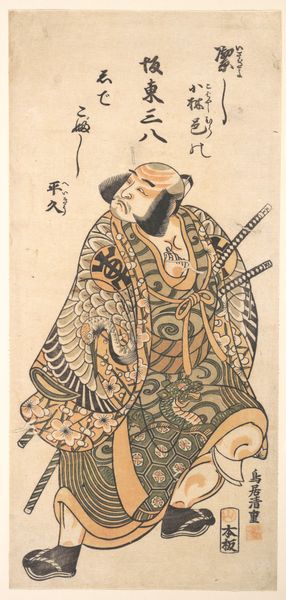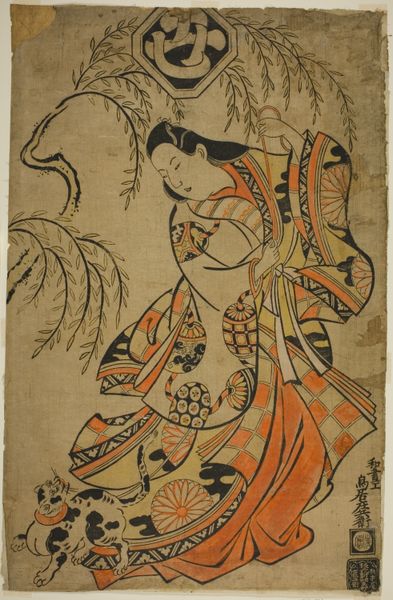
drawing, paper, ink
#
portrait
#
drawing
#
water colours
#
asian-art
#
figuration
#
paper
#
ink
#
coloured pencil
#
line
Dimensions: Image: 48 in. × 26 3/4 in. (121.9 × 67.9 cm) Framed: 62 1/4 × 39 in. (158.1 × 99.1 cm)
Copyright: Public Domain
Editor: This is a drawing called "The Daoist Immortal Han Xiangzi" made with ink and watercolors on paper sometime between 1475 and 1505 by Liu Jun. There is something incredibly lonely and ethereal about this figure playing the flute, but he still looks grounded. What’s your read of this piece? Curator: It strikes me as an intriguing exploration of marginality and dissent. Here, we have Han Xiangzi, a figure who chose a path outside the Confucian structure. His dedication to Daoism and his pursuit of enlightenment can be interpreted as an act of rebellion. Think about the historical context: what did it mean to step outside of societal expectations during the Ming dynasty? Editor: That’s a great point. How would an audience have received it then? Curator: This representation would speak to anyone feeling constrained by social and political norms, but it might have alienated viewers loyal to mainstream values. Notice, too, how he’s rendered – his slightly dishevelled appearance, the flute he plays. How do these choices position him in relation to power? Are they romanticizing an "outsider" status? Editor: The details definitely make him more relatable. The flute brings music and a sense of creativity into the scene. It connects him to something larger. Curator: Exactly! So what statement is Liu Jun making through this artwork about resistance and individuality? What can this image teach us about art as a tool for reflecting on identity? Editor: Looking at it that way helps me appreciate it more. Thanks, I'm starting to get a feel for what's going on in this artwork. Curator: Remember art holds a mirror up to society; what we see reflected is just as much about ourselves as it is about the past.
Comments
No comments
Be the first to comment and join the conversation on the ultimate creative platform.

